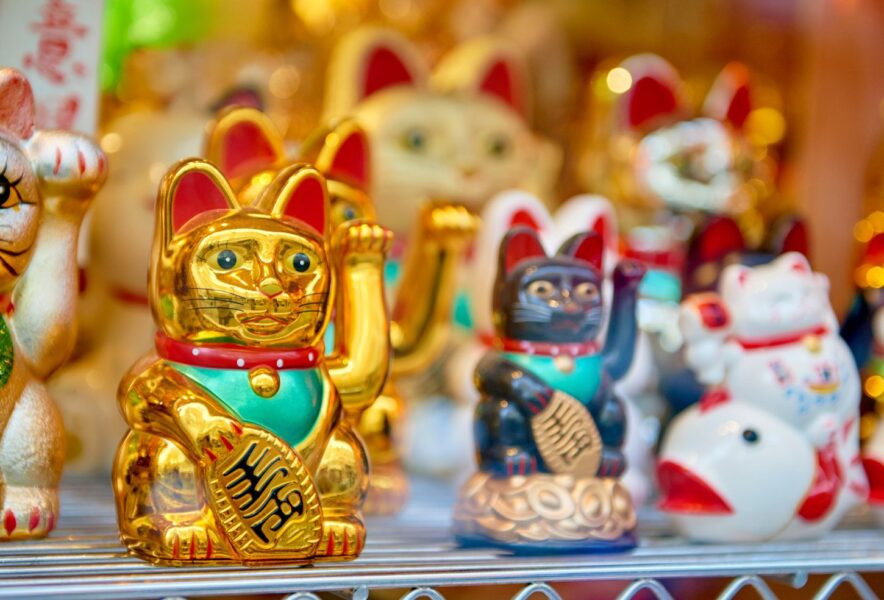Maneki Neko, or the “beckoning cat,” is one of Japan’s most beloved symbols of good fortune and prosperity. With one paw raised in a beckoning gesture, these charming figures are often placed in shops, restaurants, and homes to invite good luck, wealth, and success. Widely recognized both in Japan and abroad, Maneki Neko has become an iconic figure of Japanese culture.
What is Maneki Neko? An Introduction to Japan’s Beckoning Cat
Maneki Neko, literally meaning “beckoning cat,” is a traditional Japanese figurine believed to bring good luck and prosperity to its owner. The figure is usually depicted with one paw raised, inviting wealth or customers. It is commonly found at the entrances of businesses to attract success, but Maneki Neko is also placed in homes for good fortune. The figure’s popularity has grown far beyond Japan, making it a widely recognized cultural icon around the world.
The History of Maneki Neko: From Temple Guardian to Global Icon
The origins of Maneki Neko are somewhat unclear, but one popular legend places its origin at Gotokuji Temple in Tokyo during the Edo period (1603–1868). According to the story, a poor monk’s cat beckoned a traveling merchant inside just before a storm, saving him from danger. In gratitude, the merchant donated to the temple, which later became known as a place associated with good fortune. Since then, Maneki Neko has been regarded as a symbol of prosperity and protection, spreading from Japan to become a global symbol of good luck.
The Different Types of Maneki Neko: Colors and Their Meanings
Maneki Neko comes in various colors, each with a specific meaning:
- White: Symbolizes purity and positive energy, and is the most common type of Maneki Neko.
- Black: Offers protection by warding off evil spirits and bad luck.
- Gold: Attracts wealth and prosperity, making it popular in business settings.
- Red: Represents protection from illness and evil, often used as a charm for good health.
- Pink: Associated with love and romance, it is used to attract success in relationships.
In addition to the colors, the raised paw also has significance. If the left paw is raised, it is said to invite customers and people, while the right paw invites wealth and money.
How to Use a Maneki Neko: Placing the Cat for Good Fortune
When using a Maneki Neko, where you place it is key to maximizing its ability to bring good fortune. For businesses, placing the figure near the entrance or on the counter is a common practice to attract customers and success. In homes, Maneki Neko is often placed in the living room or at the entrance to invite good luck and prosperity into the household. It’s generally recommended to position the cat facing outward, so it can “beckon” fortune into the space.
Where to Buy Authentic Maneki Neko in Tokyo
Tokyo is home to many shops that sell traditional and modern versions of Maneki Neko. Popular tourist areas such as Asakusa and Ueno feature numerous souvenir shops offering a wide variety of Maneki Neko figurines in different designs and sizes. You can also visit Gotokuji Temple, believed to be the birthplace of the Maneki Neko, where you can purchase special versions of the cat within the temple grounds. Additionally, department stores and gift shops across Tokyo offer modern interpretations of Maneki Neko, making it easy to find a figure that suits your taste.

Comment